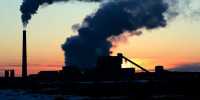Despite the moderating influence of La Nina, the year 2021 was the fifth hottest on record, according to the European Copernicus Climate Change Service. The seven hottest years on record, according to their data, all occurred in the last… seven years. Last year, global average temperatures were between 1.1 and 1.2 degrees Celsius (1.98 and 2.16 degrees Fahrenheit) over pre-industrial levels, creeping closer to 1.5 degrees Celsius (2.7 degrees Fahrenheit) barrier those world governments agreed to avoid with the Paris Agreement. It is not as they are succeeding at it.
The warmest calendar year on record was 2016, followed by 2020, which was only 0.01°C cooler. The third was in the year 2019, while the fourth was in the year 2017. 2015 and 2018 tied for sixth place after 2021. In a press briefing, Freja Vamborg, a senior scientist for C3S at the European Centre for Medium-Range Weather Forecasts, explained that 2021 was just slightly warmer than the previous two years. As a result, depending on the data collected, different data sets may rank 2021 as the sixth or seventh hottest year on record.
Regardless of the classification, the fact that the hottest years in millennia have all occurred since 2015 is the loudest conceivable alarm bell. Most landmasses and the majority of the ocean had above-average temperatures. The west coast of the United States and Canada, as well as central and northern Africa, the Middle East, Afghanistan, the Tibetan Plateau, and the far south of South America, were much hotter than average in comparison to the previous thirty years. Australia, Alaska, Antarctica, and a vast region of the Pacific saw colder-than-average weather, owing to La Nina.
“Although La Nina conditions in the Pacific Ocean temporarily slowed slightly human-caused climate warming in the first half of 2021. The devastating flooding in central Europe and severe heatwaves and wildfires across the Mediterranean and North America demonstrate that when extreme weather patterns strike, they are more severe in a world that is over 1 degree Celsius warmer than pre-industrial times,” Professor Richard Allan, Professor of Climate Science, University of California, Berkeley, said.
“Continuous monitoring of the globe is critical for recording and developing resistance to impacts, as well as spotting surprises that emerge, such as a continuous rise in methane concentrations and the [sheer] severity of climatic extremes currently being observed.” The Copernicus Report’s preliminary data also looked at the rise of carbon dioxide and methane in the atmosphere. Over the last decade, emissions have remained relatively steady, contributing to a rise in the concentration of these greenhouse gases in the atmosphere. The rise in methane was particularly rapid. The solution to reducing emissions is simple: reduce the amount of carbon dioxide and methane pumped into the atmosphere.














